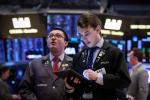The Economic Recovery and Monetary Policy:
Taking the First Step Towards the Long Run
Esther L. George
President and Chief Executive Officer
Federal Reserve Bank of Kansas City
I appreciate the opportunity to be in Santa Fe. The Federal Reserve Bank of Kansas City serves a seven-state region that includes this part of New Mexico. Nearly 100 years ago, Congress chose to put 12 regional Reserve Banks and their branches across the country because decisions about the nation’s money supply and its financial system are important to the entire country and affect every business and each citizen.
That’s why I am in New Mexico this week. These regional connections serve the Federal Reserve well in understanding the economic conditions and business climate that affect the Fed’s responsibilities for monetary policy, supervision and regulation of financial institutions, and the U.S. payments system. I always learn a great deal when I tour the region. Between visits, our directors and advisory council members serve as our eyes and ears in the vast and diverse region served by the Kansas City Fed. They provide a valuable source of information about the ever-changing economic conditions on Main Street, and their reports to us are one of the essential inputs I bring to meetings of the Federal Open Market Committee (FOMC). I am pleased that so many of those directors and advisory council members are here today. I thank them for their service.
My remarks today reflect my views on the national economy and on the next steps for the
Federal Reserve’s monetary policy, which are currently not shared by a majority of the voting members of the FOMC. For that reason, I am especially pleased to have this opportunity to explain my thinking about the economy and monetary policy within the context of a longer-term look at the period of recovery from the financial crisis and deep recession.
During this period, the FOMC has engaged in an experiment of aggressive monetary policy easing. For the most part, these policy actions have few precedents, and therefore, no simple formula exists to direct policymakers on how to eventually return monetary policy to
more-normal settings. Because of this, considerable judgment that is informed by history and experience will be important for guiding future policy choices.
A Slow But Steady Recovery
This month marks the start of the fifth year of an economic recovery in the United States.
It’s been a slow recovery for sure with real GDP, the broadest measure of economic activity, growing at about a 2 percent average pace. As a result, the economy has recovered from its deep losses and is now about 8 percent larger than it was in 2009. Over this period, households, businesses and banks have been repairing and rebuilding their balance sheets.
The economy has faced bouts of difficulty during this period of recovery, causing many to doubt its sustainability. Episodes of financial stress and uncertainty driven by events from abroad, as well as by fiscal restraint at home, temporarily interrupted the pace of growth throughout the recovery. Yet, the economy has continued to heal, showing signs of steady progress in a number of important respects, including a sustainable pace of consumer spending, improvements in household net worth and a return of consumer confidence. Businesses also have been spending on equipment and software, and corporate profits have been historically high the past two years.
The housing sector has recovered more slowly, but has gained notable momentum over the past year. Residential construction is now contributing positively to real GDP growth each quarter. The number of new housing starts has moved well above the post-crisis low, and new construction is supported by improving housing demand, as reflected in rising sales and home prices.
Labor markets also are continuing to heal. Since the end of 2009, about 6 million jobs have returned. The pace of job growth has been unusually slow compared to other recoveries, but it has been strengthening. Over the past six months, employment has increased by an average of slightly more than 200,000 jobs per month. This pace of job growth is more than sufficient to keep up with population growth and put unemployed people back to work. Initial claims for unemployment insurance, which is an indicator of how many people are losing jobs, is near its lowest point since the end of the recession. This is notable improvement.
Even as the housing sector, labor market and broader economy continue to move in the right direction, growth this year may be tempered once again—this time by fiscal issues associated with mandated federal government spending cuts and uncertainty about future tax policy and government spending. Business owners I speak with continue to emphasize that regulatory uncertainty in a number of areas—including the implementation of health care reform
—is causing them to take a more cautious approach when hiring new workers and making capital investments.
I expect the economy will push through these obstacles with growth at about 2 percent this year with low inflation. By next year, growth should pick up to about 3 percent, causing the unemployment rate to continue to fall.
The FOMC and Its Policy Choices
It is within this context that I turn now to the policy choices that lie ahead for the Federal Open Market Committee. The FOMC’s decisions about monetary policy are guided by the objectives given to it by Congress. These objectives require the Federal Reserve to pursue policies that “…maintain long run growth of the monetary and credit aggregates commensurate
with the economy's long run potential to increase production, so as to promote effectively the goals of maximum employment, stable prices, and moderate long-term interest rates.” Over the course of the economic recovery, the FOMC has repeatedly intensified its efforts to boost growth and speed up the return to full employment.
With short-term interest rates near zero, unemployment high and inflation low, the Federal Reserve has looked to unconventional policy actions to provide further stimulus in the interest of boosting growth and bringing down the unemployment rate faster. These actions include large-scale asset purchases, more commonly known as “quantitative easing,” along with conditional commitments to keep rates low for an extended period, also known as “forward guidance.”
Based on forward guidance from the FOMC, the current exceptionally low level of short-term interest rates is likely to remain in place for some time, at least until the unemployment rate reaches 6.5 percent and as long as inflation is not projected to exceed 2.5 percent. To provide additional stimulus when interest rates are near zero, the FOMC has authorized the purchase of $40 billion of agency mortgage-backed securities (MBS) and $45 billion of U.S. Treasury securities each month. At this pace, the Fed’s balance sheet is expanding by more than $1 trillion per year. The FOMC reaffirmed this policy stance at its most recent meeting in late April, noting that it was prepared to adjust the pace of asset purchases as warranted by the outlook for the labor market or inflation.
Returning to a long-run focus
With the economy improving and with monetary policy having been extraordinarily accommodative for nearly half a decade, the world, it seems, is holding its breath as it waits to
learn when the FOMC might adjust its current policy settings. This anxiety follows in part from the fact that a number of global economies have come to depend on central banks to provide unprecedented amounts of money to engineer growth and influence asset values, fearing otherwise that deflation would take hold.
In the United States, for example, the Federal Reserve has added more than $2 trillion in Treasuries and agency-MBS securities to its balance sheet over the past five years and continues to add $85 billion each month. To varying degrees, these actions have influenced asset prices, supported financial markets and boosted household wealth.
These unconventional actions also bring their own uncertainty about the outlook for the economy and increasingly appear to be viewed by markets and the public as “conventional.” As a result, several sectors in the economy are becoming increasingly dependent on near-zero short-term interest rates and quantitative easing policies. For example, debit balances in security margin accounts at broker-dealers hit an all-time high in April of this year. The rise in these balances indicates that investors are borrowing at very low rates of interest to purchase riskier financial assets. Presumably, some investors are pursuing this strategy because they anticipate that loans will continue to be available at very low rates of interest, which will allow them to ride out any market volatility. Likewise, an extended period of low rates is causing investors to be more aggressive about seeking out higher-yielding and riskier assets in the leveraged loan market. Leveraged loans are packages of higher-risk commercial loans, which hit an all-time high in the first quarter of this year.
These issues, among others, raise a most important question for the FOMC about when to shift its policy focus to the longer run and what steps should be taken now that will return the economy to a state less dependent on monetary stimulus.
Like others, I want to see the U.S. economy grow with healthy job creation. Without question, more progress is needed in our labor market. While monetary policy affects inflation and financial stability and influences employment, it cannot singlehandedly fix today’s high unemployment. That will take additional time. In maintaining its present course, the FOMC must consider other possible unintended consequences. For example, Will continuing with current policy and the creation of even greater excess reserves in the banking system result in more lending and economic growth or merely invite asset misallocation? Are we creating a path to stable long-term growth or fostering uncertainty about the impact to the economy when the Federal Reserve must unwind its balance sheet?
Given these dynamics, and in light of improving economic conditions, I support slowing the pace of asset purchases as an appropriate next step for monetary policy. Moreover, such actions would not constitute an outright tightening of monetary policy, but rather, it would slow policy easing. History suggests that waiting too long to acknowledge the economy’s progress and prepare markets for more-normal policy settings carries no less risk than tightening too soon.
In other words, a slowing in the pace of purchases could be viewed as applying less pressure to the gas pedal, rather than stepping on the brake. Adjustments today can take a measured pace as the economy’s progress unfolds. It would importantly begin to lay the groundwork for a period when markets can prepare to function in a way that is far less dependent on central bank actions and allow them to resume their most essential roles of price discovery and resource allocation.
Santa Fe, New Mexico
June 4, 2013








Add a Comment
We encourage you to use comments to engage with users, share your perspective and ask questions of authors and each other. However, in order to maintain the high level of discourse we’ve all come to value and expect, please keep the following criteria in mind:
Perpetrators of spam or abuse will be deleted from the site and prohibited from future registration at Investing.com’s discretion.